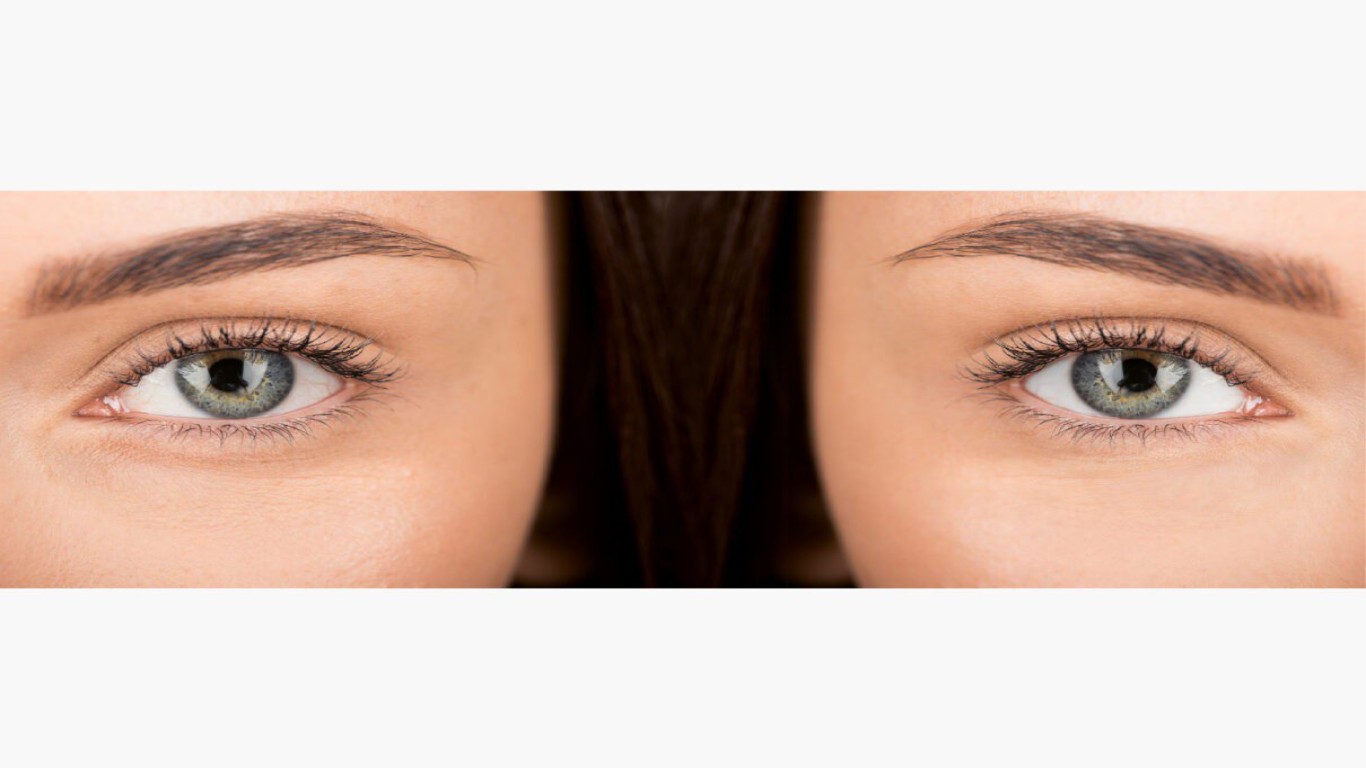What Is Photo Retouching: A Comprehensive Guide
by Delwar Hussain / Last Update: September 16, 2023
What is photo retouching? As technology continues to advance, the ability to manipulate and enhance digital images has become increasingly sophisticated. One of the key techniques used to improve the quality and appearance of photographs is photo retouching. But what exactly is photo retouching and how is it performed?
According to reports, it is estimated that at least 1.2 trillion digital photos have been captured last year and that’s only set to grow as per Ephotozine and New York Times. The sole reason is that almost every individual nowadays has a smartphone in their pocket, which is used to capture photos.
Now the important questions come to a discussion on how individuals tend to Retouch Photos. One may ask what is Photo Retouching actually and why it is so important. The term “retouch” implies the act of improving the appearance of an image. Generally, in photography, retouching simply means removing certain defects from an image.

Figure 1: Increasing number of photos being taken over every decade as per Ephotozine.
In other words, Photo Retouching is defined as the process of changing an image to prepare it for the final presentation. In particular, the word retouching alludes to any cycle used to actually change a picture. Photography retouching is to eliminate specific imperfections from an image. In this guide, we will take a detailed look at the process of photo retouching and explore its various applications.
What is Photo Retouching?
At its core, photo retouching is the process of editing and enhancing digital images to improve their overall appearance. This can include a wide range of adjustments, from basic color correction and exposure adjustments to more advanced techniques like removing blemishes, smoothing skin, and even changing the shape of an object or person.
Photo retouching is typically performed using specialized software, such as Adobe Photoshop, Lightroom, or GIMP. These programs provide a wide range of tools and filters that can be used to adjust various aspects of an image, such as brightness, contrast, saturation, and more.
The History of Photo Retouching
The practice of retouching photographs has been around for well over a century. In the early days of photography, retouching was performed using a variety of manual techniques, such as painting directly on the negative or print. This was a time-consuming and labor-intensive process that required a great deal of skill and artistic talent.
As technology progressed, the process of retouching photographs became more automated. The invention of the airbrush in the late 19th century allowed for more precise and subtle adjustments to be made to photographs. And with the advent of digital photography and image editing software, the process of retouching has become even more streamlined and efficient.
Applications of Photo Retouching
There are countless applications for photo retouching, and the technique is used in a wide range of industries. Some of the most common applications include:
Fashion and Advertising
One of the most obvious uses for photo retouching is in the fashion and advertising industries. Advertisements for clothing and beauty products often feature models with perfect skin and flawless complexions. This is achieved through the use of photo retouching techniques, such as smoothing out wrinkles, removing blemishes, and even slimming down the subject’s figure.
Magazine and Print Media
Another major application of photo retouching is in magazine and print media. Many magazines and newspapers feature photographs that have been retouched to improve their overall appearance. This can include adjusting the color balance, removing unwanted elements from the background, and even removing wrinkles and blemishes on the subject’s face.
Social Media and Online Sharing
With the rise of social media and photo-sharing websites, photo retouching has become an increasingly common practice for everyday users as well. Social media platforms like Instagram and Facebook have built-in editing tools that allow users to quickly and easily adjust the appearance of their photos before sharing them online.
Professional Photography
Of course, photo retouching is also widely used in professional photography, particularly in the fields of portrait, wedding, and commercial photography. Photographers often use retouching techniques to improve the overall quality of their images and to make their subjects look their best.
The Ethics of Photo Retouching
photo retouching have come under scrutiny. Some argue that retouching photographs can be misleading and create unrealistic expectations for viewers. Others argue that retouching is an important tool for improving the overall quality of photographs and allowing photographers and artists to express their creative visions.
Regardless of one’s stance on the ethics of photo retouching, it is important for photographers and retouchers to be transparent about their use of the technique. This means clearly labeling retouched images, not removing or altering important elements of the photograph, and not making changes that are misleading or deceptive.
Additionally, it’s worth noting that photo retouching should never be used to perpetuate harmful stereotypes or body shaming. This includes slimming down subjects’ figures, removing wrinkles, blemishes, and other signs of aging, or making changes that are racist, sexist, or otherwise discriminatory.
The Main Benefits of Photo Retouching

Figure 2: Benefits of Photo Retouching.
1. Incredible Photographs Sell
Almost 70% of consumers tend to claim that the overall quality of a product’s photo is ‘significantly crucial’. For instance, a fast-food joint publishes mouthwatering pictures of its menu, or Real estate presents pictures of its properties for sale.
2. Building a Brand Reputation
Based on the website and social media presence, it’s likely for the potential partners and customers to evaluate the current Portfolio and Productivity. Thus, having unique professional photos or images rather than stock images will certainly play a part in establishing and supporting the brand as a whole.
3. Standing out from the Competition
With aid of photo retouching, it could assist a company to establish an authentic genre of the company’s very own visual content, that will distinguish not only the brand but as well as a strong online process, stimulating growth and generating substantial benefits.
4. Social Media Marketing:
A company’s target audience is much more likely to draw in with great pictures rather than poor quality and low-resolution ones. Professionally taken and retouched photos are shareable and will help grow the number of followers on social media.
5. Printed Marketing Materials
The majority of sales representatives tend to utilize printed materials such as brochures, flyers, and catalogs during meetings with potential clients. Thus, it is important that the company should only use professionally edited/retouched photos that are appealing to their target audience.
Likely Audiences That Benefitted From Photo Retouching
By Image Retouching techniques it enhances the fine details of the images, transforming them to appear to look more polished and attractive, therefore more likely to build and uphold a sturdy customer relationship encouraging sales. SMBs also referred to as small and medium businesses are also benefited from photo retouching.

Figure 3: Likely audiences that are benefitted from Photo Retouching.
Approximately around 46% to 50% of people find it easier to assure a business that tends to have and portray genuine images on their website, as compared to stock images. Having the photos edited, and retouched in a professional manner, even a small office space can be transformed to look spacious and welcoming, without misleading the audiences or users.
Therefore, editing itself can be time-relevant by providing necessary adjustments, contrast, and coloring. So, when simple editing is not able to get the job done, that is where retouching begins. By spending up to ten minutes of work on an image, we can say that it is basic or amateur retouching. However, generally, retouching as a whole for most of us means is defined as the alteration and manipulation of a specific photo beyond the photographer’s control and ability in the camera.
Tips and Best Practices for Photo Retouching
If you’re new to photo retouching or looking to improve your skills, here are some tips and best practices to keep in mind:
- Start with high-quality images: The better the quality of the original image, the better the results will be after retouching.
- Be subtle: Avoid making overly drastic changes to the image. Instead, focus on making small, subtle adjustments that will enhance the overall appearance of the photograph.
- Use nondestructive editing: Use editing tools and techniques that allow you to make changes to the image without permanently altering the original data. This allows you to make adjustments and experiment with different looks without worrying about losing the original image.
- Learn the basics: Familiarize yourself with the basic tools and functions of your editing software. This will allow you to make more precise and accurate adjustments to your images.
- Practice: As with any skill, practice is key to becoming proficient in photo retouching. Try experimenting with different images and techniques to improve your skills and develop your own unique style.
The Correlation Photo Retouching and E-commerce Website
In the era of digitalization, digital photography plays a pivotal role across a plethora of industries. Especially being beneficial for the e-commerce sector to the retail sector. On a day-to-day basis, the need for digital photography is booming. Photo retouching and editing play an imperative role in any business in which the company can enhance and improve its brand recognition, visibility, and brand goodwill overall.
Conclusion
Photo retouching is a powerful technique that allows photographers and artists to improve the overall appearance of their images. While the ethics of retouching can be debated, it is important to be transparent about the use of the technique and to avoid making changes that are misleading or discriminatory.
The overall procedure of editing a photo is often quick, which usually ranges from a few seconds to a couple of minutes for each particular photo. Maybe it appears to be prompt and swift, however, when it comes to doing 500 or more photos individually, that certainly accumulates to hours and hours of rigorous work. It is an open fact or perhaps can say that it is a trade secret that photographers let individuals or enterprises.
So, dividing down, there may be the need for color correction, brightness, contrast, or other examples. Every single edit ends up adding style, a unique genre, or even the artist’s very own flair.
By following the tips and best practices outlined in this guide, you can develop your skills and create high-quality, retouched images that will stand out from the crowd.
So, if you are looking forward to standing out from the crowd in a competitive market, you can always count on Cutting Edger to assist you with providing quality re-touched images as per your requirements and making an impression on your brand’s portfolio.
Article by
Delwar Hussain
Image Processing Expert, Photography Enthusiast, Blogger, COO at Cutting Edger
Over 18 years of experience in Graphic Design, Image Editing, 3D Modeling/Rendering and Digital Products, I have got opportunity to work with different local and multi-national companies, among of them GraphicPeople, Modern Herbal Group and British Broad Casting (BBC) can be highlighted. During my career I have worked with Coca-Cola, Turkish Airlines, Singapore British American Tobacco, Dell, Pfizer Pharmaceuticals, Indeed.com, International Hotel Group (IHG), Santander Bank, Quad Inc. Adidas, Nike, Dove etc. Having 18 years of experience and being a Co-Founder and COO of Cutting Edger is providing Post Production Image Editing, 3D Modeling and Rendering, Desktop Publishing and Digital Products like Web Design and Development, Software Development, etc.

